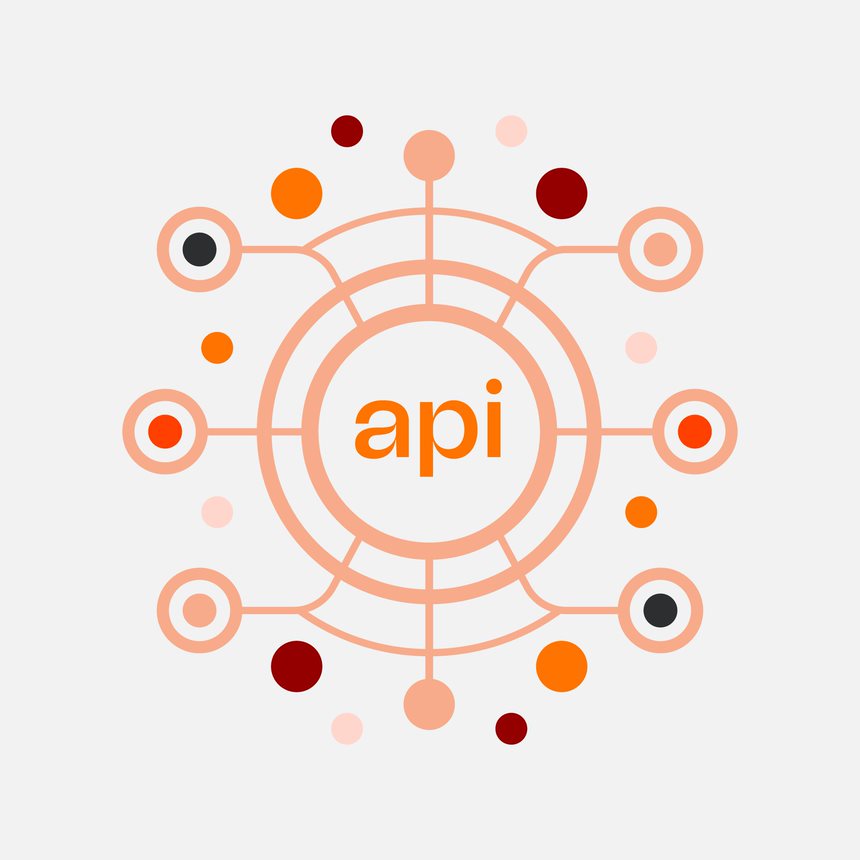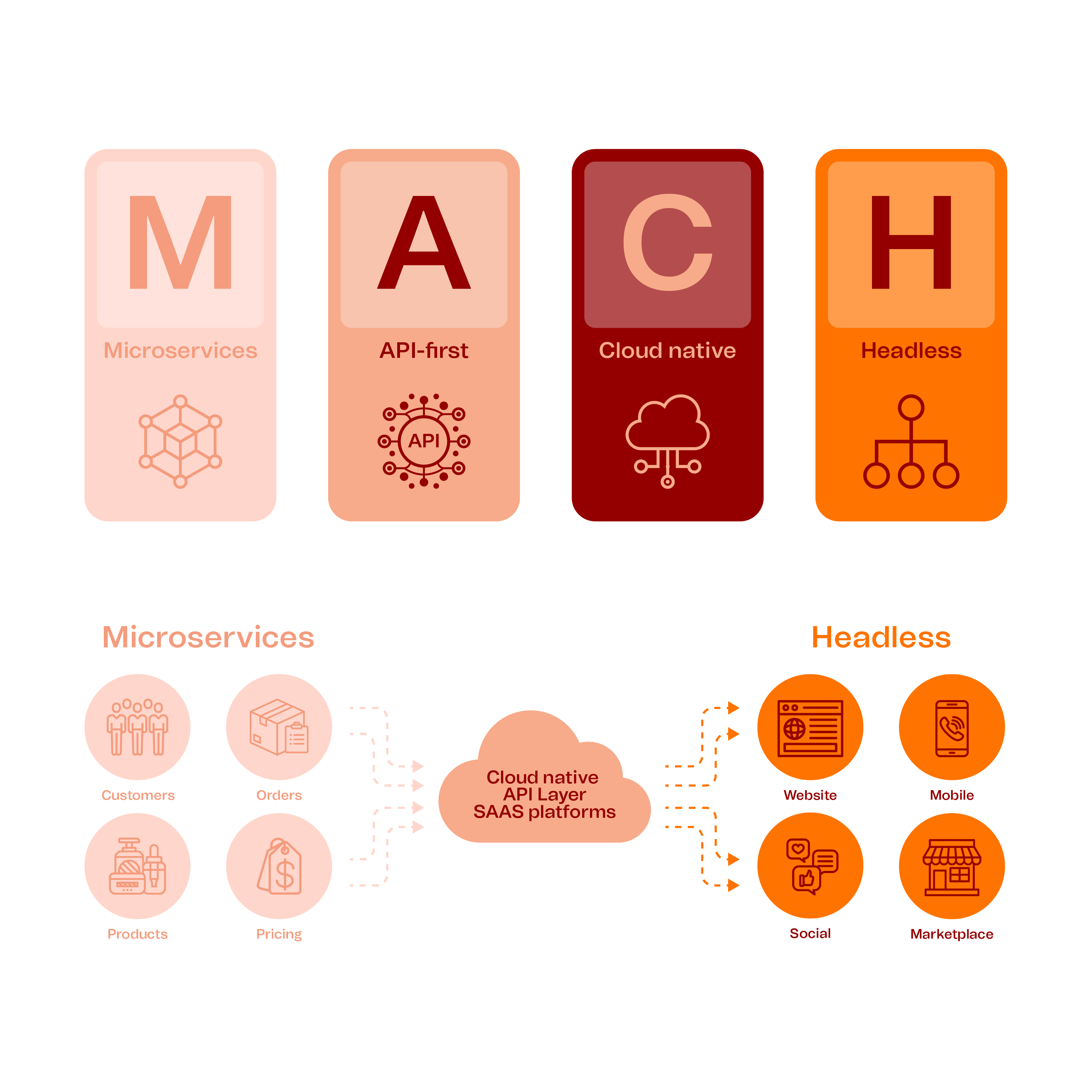Both the customer and the company can benefit from APIs. By efficiently communicating with various underlying back-end systems like the CRM and ERP system, APIs allow for more personalized user experiences and a better customer service to be offered in various front-end systems like websites, customer portals, commerce platforms & market places, mobile apps and chatbots. Consequently, this allows for optimization of back-office processes and business flows.

API & integrations
In today's interconnected digital landscape, seamless communication between systems is crucial. Our expertise in API development and integrations ensures that your various digital tools and systems interact seamlessly, streamlining processes. We create solutions that connect your digital infrastructure, eliminate data silos, and enhance operational efficiency across your organization.

What are APIs?
API stands for Application Programing Interface. In the world of technology, APIs and integrations are becoming increasingly important, since they define how pieces of software can communicate with each other.
APIs and integrations can be used to build almost any type of application or service that needs to exchange or access data with other systems.

The API first principle in MACH
MACH (Micro Service, API First, Cloud Native SaaS and Headless)
We consistently use the API-first principle, meaning that everything we develop is done with the ultimate goal of API usage in mind. In API-first development, APIs are no longer an afterthought but rather a key differentiating factor. Each API is treated as its own individual product, providing flexibility in its design, development, deployment and maintenance.
Building APIs and integrations for clients is like solving a puzzle, it is about finding a way to connect all the pieces in the most efficient and effective way possible.

Our approach for APIs & Integrations
When building composable solutions, we bring together various systems and integrate them to work together, such as e-commerce, PIM, CRM, DAM, etc.
We write our business logic through generic APIs to make them accessible and reusable in our digital platforms. This decoupled approach avoids direct connections between two systems and allows a flexible, futureproof orchestration between the different components of the solution.
The process of building and implementing APIs and integrations can vary depending on the specific needs and requirements of the project. In general, the following steps are involved:
- Planning: This includes defining the goals and requirements of the project, deciding the scope of the work, and creating a plan for how the APIs and integrations will be built and deployed.
- Design: During this phase, the details of the APIs and integrations are fleshed out, including the specific functions and data that will be made available, the protocols and standards that will be used, and any security measures that will be applied.
- Testing: Once the APIs and integrations are developed, they will need to be tested to make sure they are functioning correctly and meeting the requirements of the project.
- Deployment: This is the process of making the APIs and integrations available for use. This may involve deploying the APIs and integrations to a server or hosting environment or making them available for other parties to access.
- Maintenance: Once the APIs and integrations are live, ongoing maintenance is necessary to fix bugs, introduce new features, and ensure that they continue to function correctly.

Why we are your partner for APIs & Integrations?
We not only have a team of experts with a wide range of skills and experience in developing APIs and integration, we also have a network of resources and relationships that we can rely on in order to find the best solution for your needs. Moreover, we are used to adapt to changing needs or priorities and can ensure that your project is completed on time and on budget.
Also, our approach utilizes scalable microservices, rather than full end-to-end integrations or direct connections between systems. This greatly reduces the time-to-market for new services to customers or prospects, and allows for faster testing with smaller MVPs. This in turn, enables a rapid iteration and learning process, which can then be applied to broader roll-out projects.
Take a look at a few of our best cases with API and Integrations

Samsonite
Samsonite is a manufacturer of quality luggage and durable bags. Their products are driven by innovation, iconic design, and comfort. Our team developed an API layer to connect their e-commerce ecosystem allowing them to easily scale digital sales activities based on changes in the market and customer needs.


